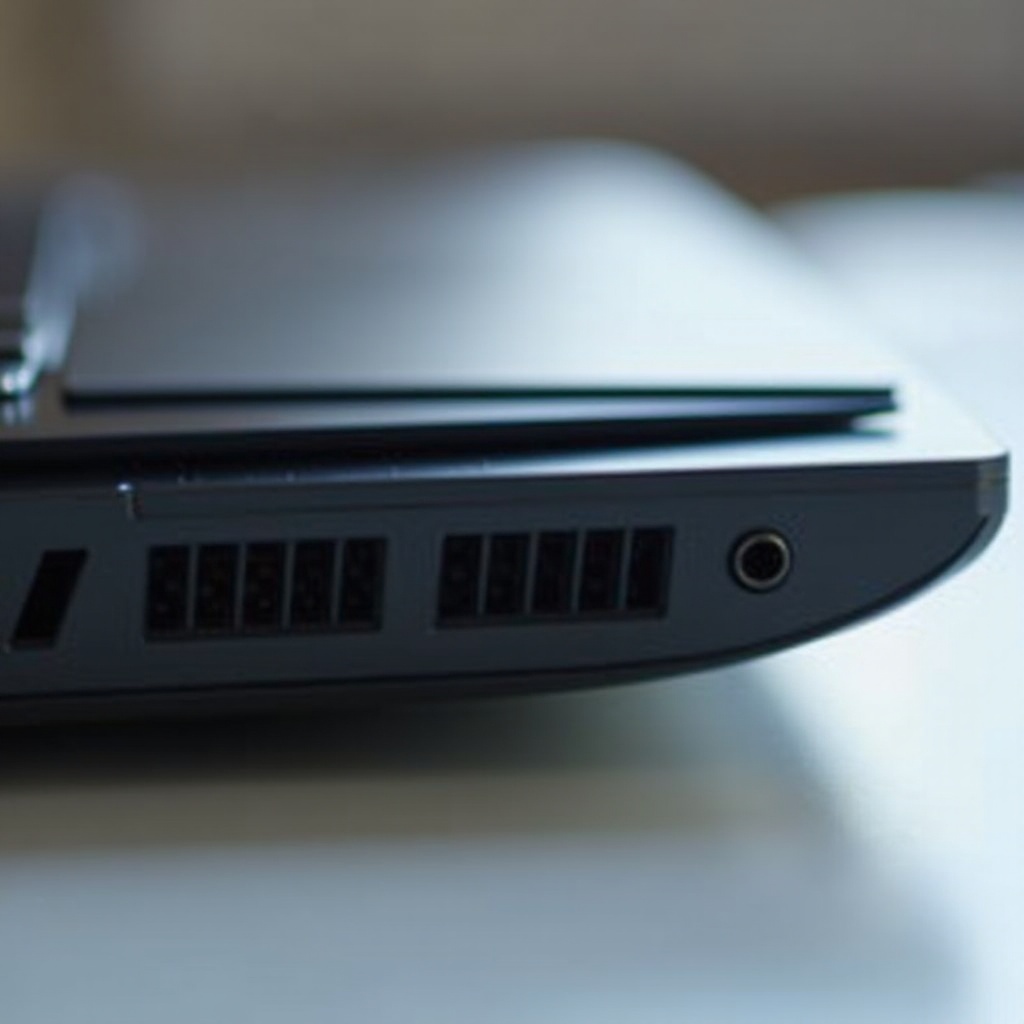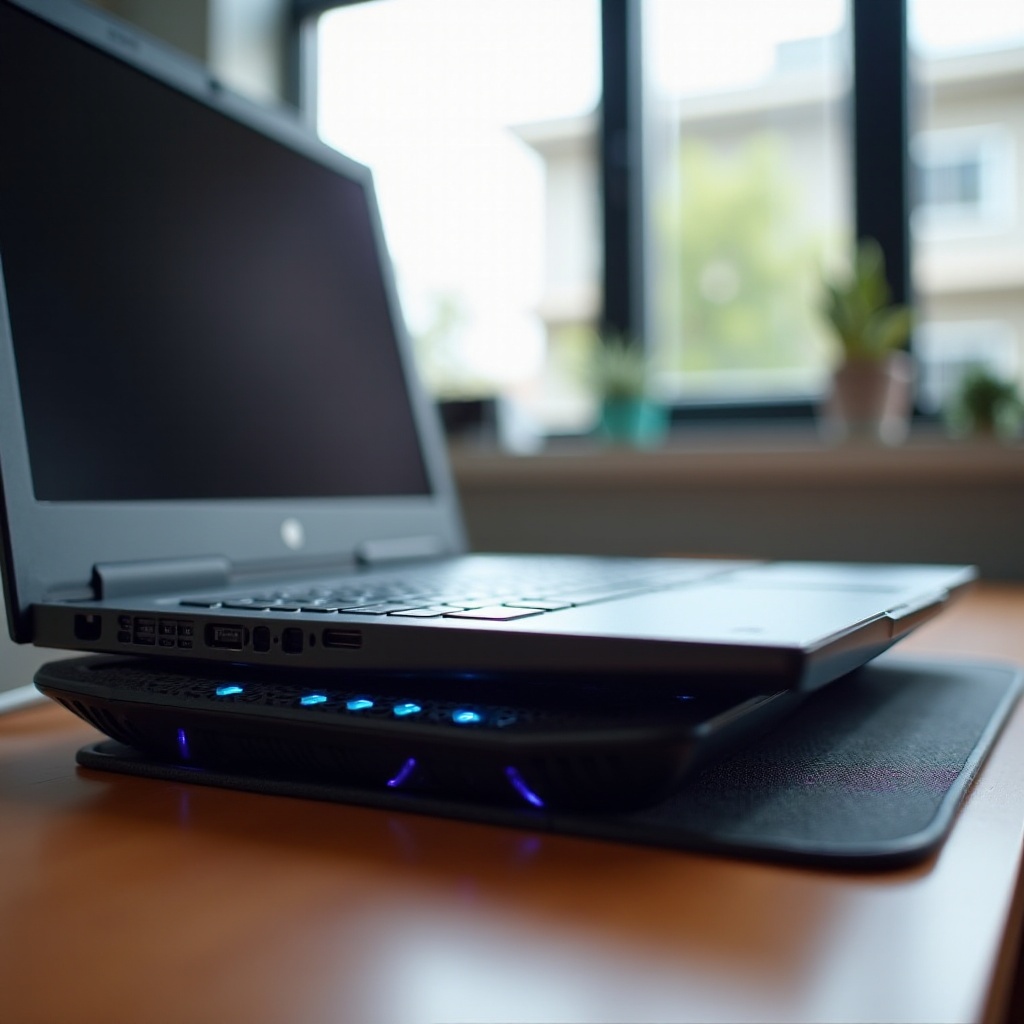Introduction
Gaming laptops are packed with powerful components in a compact form, making them susceptible to overheating. High temperatures can lead to reduced performance, system instability, and even hardware damage over time. It’s crucial to keep your gaming laptop cool to ensure peak performance and longevity.
This article will explore common causes of overheating, basic and advanced cooling techniques, regular maintenance practices, and software tweaks that can help manage your laptop’s temperature effectively. By the end, you’ll have a comprehensive understanding of how to keep your gaming laptop cool and in optimal condition.

Understanding the Causes of Overheating
To effectively combat overheating in gaming laptops, we need to first understand what causes it. Several factors contribute to rising temperatures:
-
Intensive Processing Requirements: High-end gaming and complex applications demand considerable processing power, causing the CPU and GPU to generate significant heat.
-
Compact Design: Unlike desktop PCs, gaming laptops have limited space for cooling solutions. This compact design restricts airflow and increases the likelihood of heat buildup.
-
Dust and Debris Accumulation: Over time, dust accumulates inside your laptop, clogging air vents and cooling fans. This accumulation inhibits proper airflow and results in elevated internal temperatures.
Understanding these causes will help you target the right strategies to combat overheating. In the next section, we will dive into basic cooling techniques that you can implement easily.

Basic Cooling Techniques
Using a Cooling Pad
A cooling pad is an external device designed to efficiently dissipate heat away from your gaming laptop. It usually features extra fans and a slightly elevated design to enhance airflow beneath the laptop.
- Advantages: Easy to use, instantly improves airflow.
- Tip: Choose a cooling pad with multiple high-speed fans to distribute cooling evenly.
Elevating Your Laptop
Elevating your laptop can significantly enhance airflow. You don’t necessarily need specialized equipment for this; household items like books or an old tray can work.
- Advantages: Cost-effective, simple solution.
- Tip: Ensure the elevation is stable and slightly tilts the laptop for better airflow.
Ensuring Adequate Ventilation
Proper placement of your gaming laptop can ensure optimal ventilation.
- Avoid: Placing your laptop on soft surfaces like beds and sofas, as these can block the vents.
- Prefer: Hard surfaces like a desk or a table, enhancing the space around the vents for better airflow.
With these basic cooling techniques, you can achieve immediate results in reducing your laptop’s temperatures. However, regular maintenance is equally crucial to ensure consistent performance. Let’s discuss some maintenance practices that can make a noticeable difference.

Regular Maintenance Practices
Cleaning Air Vents and Fans
Regularly cleaning your laptop’s air vents and fans can prevent dust buildup, ensuring optimal airflow.
- Steps:
- Power off the laptop and unplug it.
- Use a can of compressed air to blow out any dust from the vents.
-
Consider using a small brush to gently clean dust from the fan.
-
Frequency: Perform this task once every three to six months.
Updating Drivers and System Software
Keeping your drivers and system software up-to-date ensures efficient heat management by your hardware.
- Steps:
- Regularly check for updates from your laptop manufacturer’s website.
- Keep your GPU and CPU drivers updated.
- Install the latest firmware to manage power and heat efficiently.
Regular maintenance can keep your laptop’s cooling system functioning optimally. For more significant temperature issues, advanced cooling solutions may be necessary in certain situations.
Advanced Cooling Solutions
Reapplying Thermal Paste
Thermal paste sits between your CPU/GPU and the heatsink, facilitating heat transfer. Over time, this paste can dry out and lose efficiency.
- Steps:
- Power down your laptop and remove the back panel.
- Carefully remove the heatsink.
- Clean off the old thermal paste with isopropyl alcohol.
-
Apply a small dot of new thermal paste and reassemble the laptop.
-
Tip: Only attempt this if you’re comfortable with disassembly, or seek professional help.
Upgrading Internal Cooling Components
Upgrading components like fans or installing additional heat sinks can significantly improve cooling performance.
- Steps:
- Identify components that can be upgraded (fans, heat pipes).
- Purchase compatible and high-quality replacement parts.
-
Follow manufacturer instructions for safe installation.
-
Tip: Consult your laptop’s manual to ensure compatibility and warranty conditions.
Undervolting CPU and GPU
Undervolting reduces the voltage supplied to the CPU and GPU, decreasing heat production without sacrificing performance.
- Steps:
- Use software like Throttlestop for Intel CPUs or MSI Afterburner for GPUs.
-
Gradually lower the voltage while monitoring system stability and temperatures.
-
Warning: Undervolting should be done cautiously to avoid system instability.
With advanced cooling solutions, you can tackle even the most severe overheating issues. In addition to hardware tweaks, software adjustments can further optimize your laptop’s temperature management. Let’s explore some of these software techniques.
Software Tweaks and Management
Adjusting Power Settings
Adjusting your laptop’s power settings can balance performance and temperature.
- Steps:
- Navigate to Control Panel > Power Options.
- Select a balanced or power saver plan.
-
Customize settings to reduce maximum processor state.
-
Tip: During intensive gaming, consider switching to high-performance mode only when necessary.
Using Temperature Monitoring Software
Monitoring your laptop’s temperature can help you understand and manage heat more effectively.
- Recommended Software:
- HWMonitor: For a comprehensive overview of component temperatures.
- Core Temp: Specifically targets CPU temperature.
-
GPU-Z: Monitors your GPU’s temperature.
-
Tip: Use this software to keep track of temperature trends and adjust cooling strategies accordingly.
By combining hardware upgrades with software tweaks, you can maintain optimal temperatures and extend the life of your gaming laptop.
Conclusion
Keeping your gaming laptop cool is essential for maintaining its performance and longevity. By understanding the causes of overheating and implementing various cooling techniques, regular maintenance practices, advanced cooling solutions, and software tweaks, you can effectively manage your laptop’s temperature.
Remember, preventive measures and consistent practices not only ensure smoother gameplay but also protect your investment in the long run.
Frequently Asked Questions
How often should I clean my gaming laptop?
Clean the vents and fans every three to six months to prevent dust buildup and maintain optimal airflow.
Is using a cooling pad necessary for all gaming laptops?
While not strictly necessary, a cooling pad can greatly enhance airflow and cooling efficiency for most gaming laptops.
Can overclocking affect my laptop’s temperature management?
Yes, overclocking increases the power consumption of the CPU and GPU, leading to higher temperatures. Proper cooling measures are essential to manage this increase.
